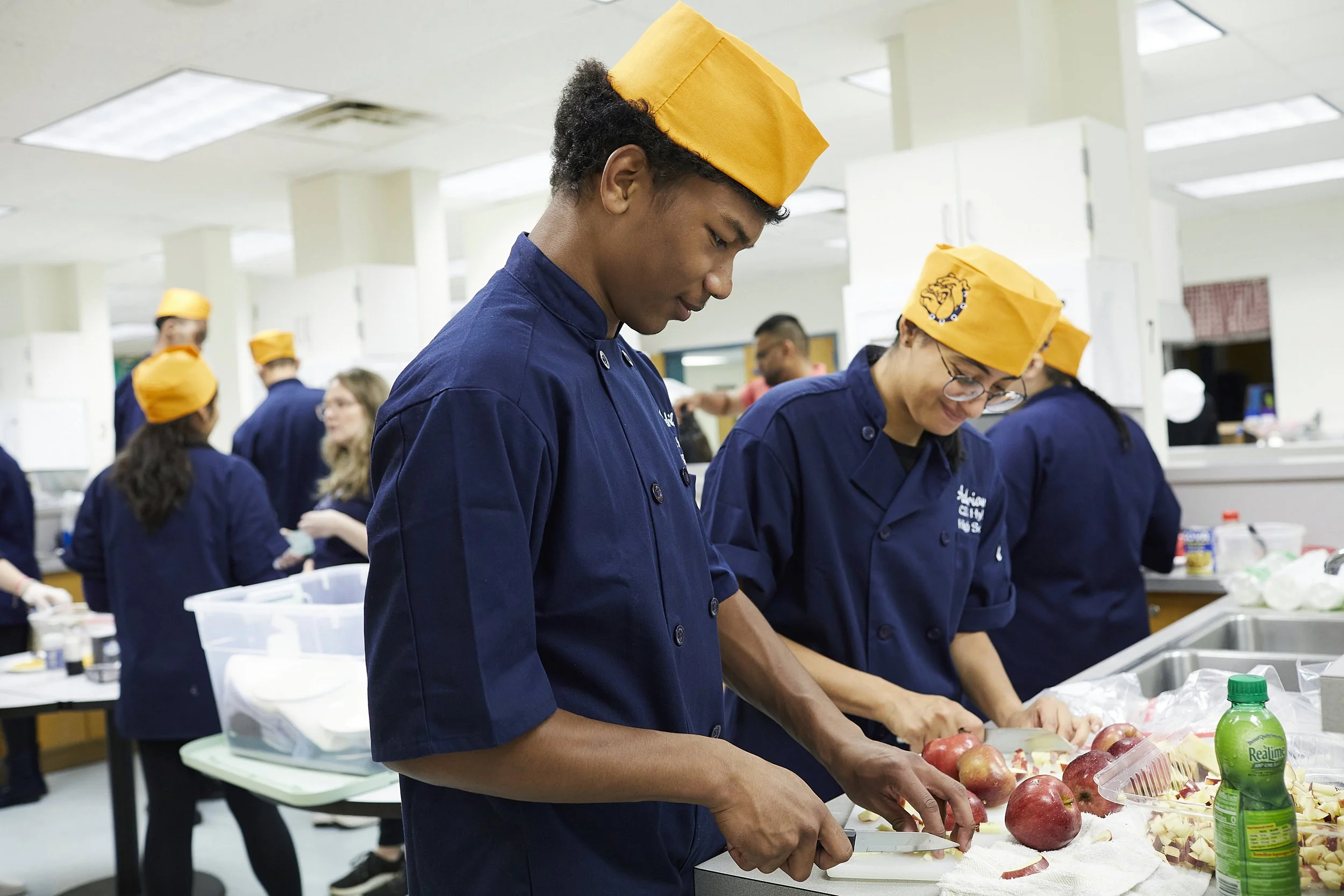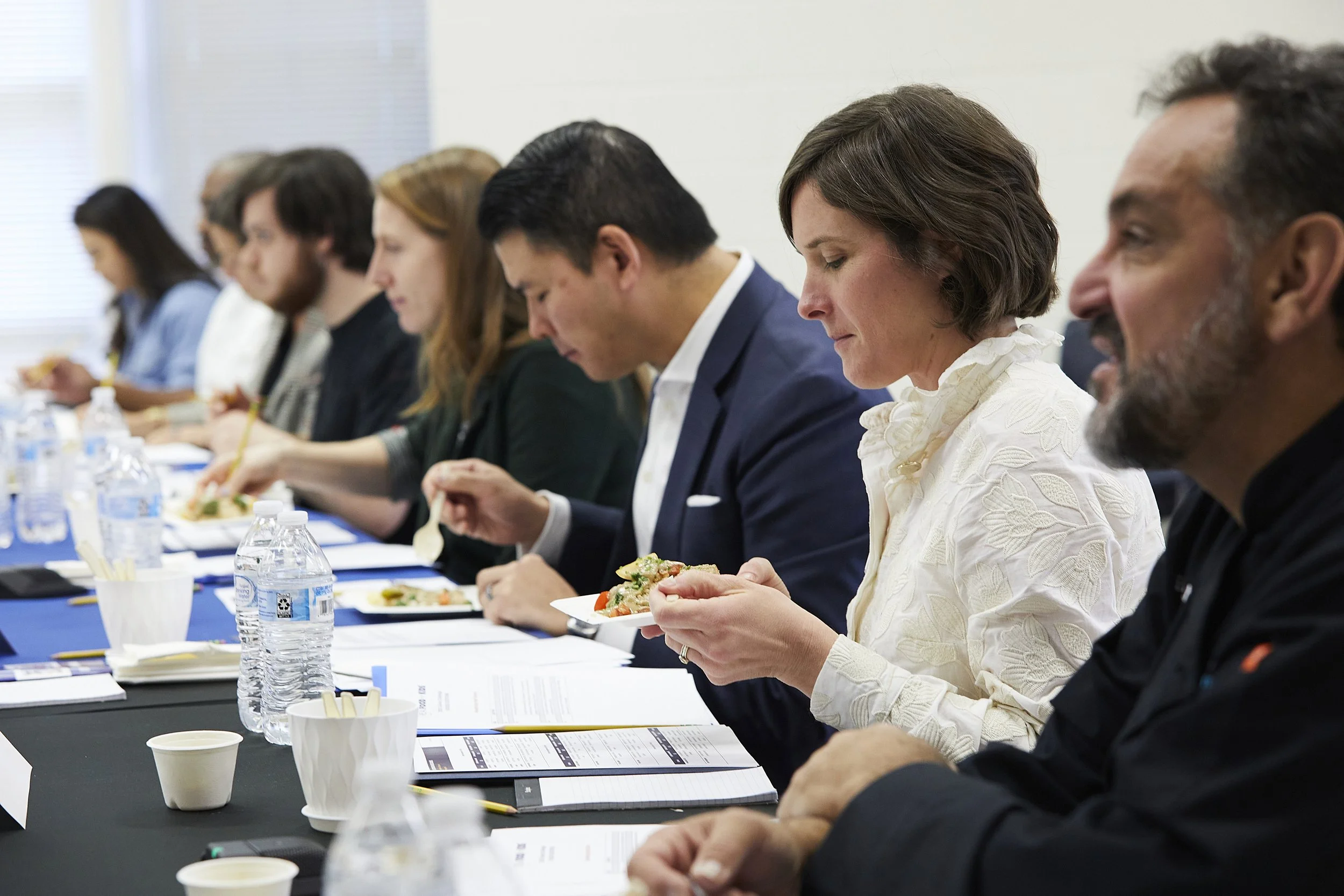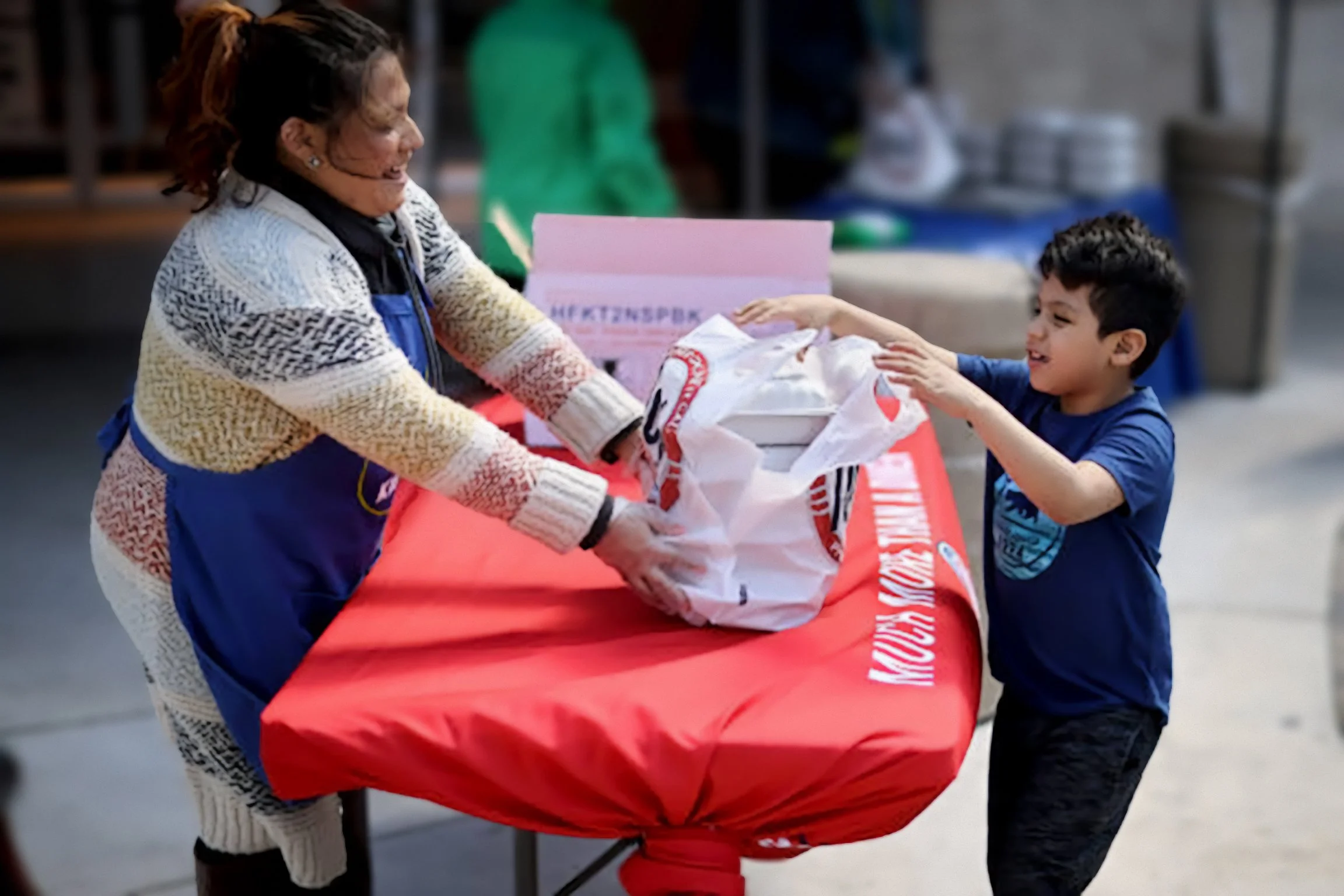PARTNER SPOTLIGHT: REAL FOOD FOR KIDS
PARTNER SPOTLIGHT:
REAL FOOD FOR KIDS
This D.C. nonprofit makes food a fundamental part of the school day for local students.
In the early 2000s, Bonnie Moore was not impressed with her son’s school lunch. Just outside the nation’s capital in Virginia’s affluent Fairfax County, his magnet elementary school included kids from all backgrounds, with its bilingual classrooms serving as a great equalizer. Though the same could not be said for the cafeteria.
“I was surprised that so many kids at his school were reliant on school meals, which, quite frankly, in those days, were crap,” says Moore, former chef sous chef at the renowned Inn at Little Washington and culinary consultant for the United States Agency for International Development. “There were more than 20 ingredients in the hamburger alone, and that didn't count the bun or condiments. From an ethical perspective, that really bothered me. Nutrition security should be a human right.”
Kids pick their favorites at a salad bar from Real Food For Kids.
And so she quickly teamed up with other local parents to form Real Food for Kids in 2010, a nonprofit advocacy group aimed at improving school meals just outside of Washington D.C. In the years since, their work has expanded from Fairfax into Alexandra, Arlington, and Maryland, collaborating with local districts to limit artificial ingredients in school breakfast and lunch, add salad bars and incorporate healthy options on their menus, and remove soda from vending machines. They’ve also offered culinary training for schools’ nutrition services staff, and even been recognized by former First Lady Michelle Obama, who invited them to speak at the White House.
For Moore, the facts were clear: For some students, school meals account for most of the calories they consume—meaning that quality of that food matters—and many studies have now shown that kids perform better academically, behaviorally, and emotionally after having nutritious meals throughout the school day.
“It's pretty hard to learn if you’re hungry,” says Moore. “’Can you imagine being a kid sitting in math class with your stomach growling? You’re not able to focus on the lesson.”
Real Food for Kids has also been working to teach students how to make healthy food. Since 2012, their Culinary Challenge has become a respected competition for middle and high-school students in the Mid-Atlantic, helping kids learn about what goes into their school meals as well as gain exposure to career pathways in the hospitality industry. Each fall, students form teams and start working on culinary projects that could become their school cafeteria’s next new dish.
“Food has the ability to be the universal language,” says Moore. “It can teach nutrition, but it can also teach geography, culture, language. And there’s a big opportunity in schools for food to become an educational tool.”
“Food has the ability to be the universal language,” says Moore. “It can teach nutrition, but it can also teach geography, culture, language. And there’s a big opportunity in schools for food to become an educational tool.”
On top of all that, Culinary Challenge meals must be prepared within the strict nutrition parameters and cost thresholds of the federally funded National School Meal Program from the United States Department of Agriculture. To do all this, they team up with school cafeteria staff as well as local chefs, like Silver Diner’s own Ype Von Hengst, who serves as culinary mentor throughout the competition.
“It inspires me and is a great way to pay it forward, helping students to learn, work together, and dig deep to better themselves,” says Von Hengst, who also partnered with Real Food For Kids during the height of the COVID-19 pandemic, during which his kitchen team helped prepare more than 500 meals a day for local students and their families. “I can only hope that I contributed a little to their future.”
Judges, including chefs, test student dishes at the annual Culinary Challenge.
Students present their school menu recipes before a panel of judges in a public competition each spring, which can be a bit intimidating. But through recipe-development lessons—teaching the students about the key components of taste, smell, texture, and presentation for any dish—Chef Ype helps put everyone at ease, according to Moore.
“He's the quintessential teacher, and the kids really follow him around like some sort of pied piper,” she says. “He’s shifted the idea of what a diner is on so many wonderful levels, including having a kids’ menu that’s a cut above. And he didn't do anything crazy—he didn’t take French fries or soda out of the restaurant. He just offered them strawberries and vegetables or juice and milk instead, and it’s made a huge difference. Offering young people healthy choices does work. They just need the opportunity. And Silver Diner is proof of that.”
EXTRA EXTRA!
WIN FREE SILVER FOR A YEAR
Silver Diner is partnering with Real Food for Kids to provide produce bags filled with fruits and vegetables to food-insecure families across the DMV. Last year alone they distributed over 780K bags of local produce.
Donate as little as $10 for your chance to win a Year of Dining at Silver, valued at $1,560 and valid at all three Silver Brands restaurants: Silver Diner, Silver New American Brasserie, and Silver Social. Over the next three weeks, additional exclusive prizes will be revealed, giving you more chances to win while making a real impact for local families.
The last day to enter is October 26, 2025. 100% of your donation will support children and families in the DMV.




